Bird Classification
Papers and Code
Revisiting MLLMs: An In-Depth Analysis of Image Classification Abilities
Dec 21, 2024With the rapid advancement of Multimodal Large Language Models (MLLMs), a variety of benchmarks have been introduced to evaluate their capabilities. While most evaluations have focused on complex tasks such as scientific comprehension and visual reasoning, little attention has been given to assessing their fundamental image classification abilities. In this paper, we address this gap by thoroughly revisiting the MLLMs with an in-depth analysis of image classification. Specifically, building on established datasets, we examine a broad spectrum of scenarios, from general classification tasks (e.g., ImageNet, ObjectNet) to more fine-grained categories such as bird and food classification. Our findings reveal that the most recent MLLMs can match or even outperform CLIP-style vision-language models on several datasets, challenging the previous assumption that MLLMs are bad at image classification \cite{VLMClassifier}. To understand the factors driving this improvement, we conduct an in-depth analysis of the network architecture, data selection, and training recipe used in public MLLMs. Our results attribute this success to advancements in language models and the diversity of training data sources. Based on these observations, we further analyze and attribute the potential reasons to conceptual knowledge transfer and enhanced exposure of target concepts, respectively. We hope our findings will offer valuable insights for future research on MLLMs and their evaluation in image classification tasks.
Generative AI-based data augmentation for improved bioacoustic classification in noisy environments
Dec 02, 2024

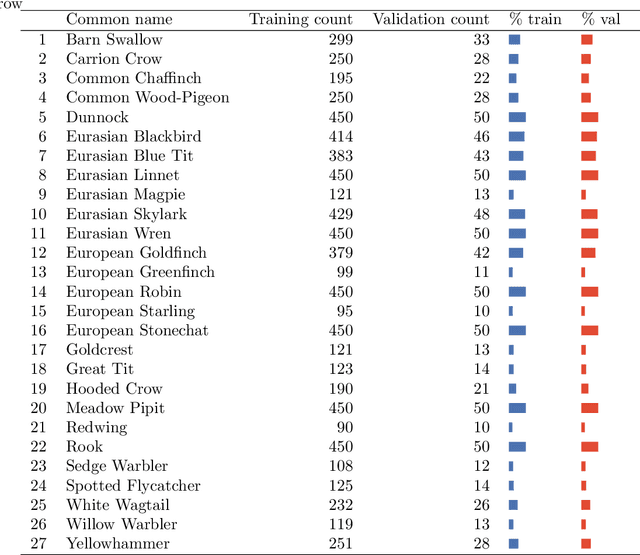

1. Obtaining data to train robust artificial intelligence (AI)-based models for species classification can be challenging, particularly for rare species. Data augmentation can boost classification accuracy by increasing the diversity of training data and is cheaper to obtain than expert-labelled data. However, many classic image-based augmentation techniques are not suitable for audio spectrograms. 2. We investigate two generative AI models as data augmentation tools to synthesise spectrograms and supplement audio data: Auxiliary Classifier Generative Adversarial Networks (ACGAN) and Denoising Diffusion Probabilistic Models (DDPMs). The latter performed particularly well in terms of both realism of generated spectrograms and accuracy in a resulting classification task. 3. Alongside these new approaches, we present a new audio data set of 640 hours of bird calls from wind farm sites in Ireland, approximately 800 samples of which have been labelled by experts. Wind farm data are particularly challenging for classification models given the background wind and turbine noise. 4. Training an ensemble of classification models on real and synthetic data combined gave 92.6% accuracy (and 90.5% with just the real data) when compared with highly confident BirdNET predictions. 5. Our approach can be used to augment acoustic signals for more species and other land-use types, and has the potential to bring about a step-change in our capacity to develop reliable AI-based detection of rare species. Our code is available at https://github.com/gibbona1/ SpectrogramGenAI.
Towards Optimizing SQL Generation via LLM Routing
Nov 06, 2024Text-to-SQL enables users to interact with databases through natural language, simplifying access to structured data. Although highly capable large language models (LLMs) achieve strong accuracy for complex queries, they incur unnecessary latency and dollar cost for simpler ones. In this paper, we introduce the first LLM routing approach for Text-to-SQL, which dynamically selects the most cost-effective LLM capable of generating accurate SQL for each query. We present two routing strategies (score- and classification-based) that achieve accuracy comparable to the most capable LLM while reducing costs. We design the routers for ease of training and efficient inference. In our experiments, we highlight a practical and explainable accuracy-cost trade-off on the BIRD dataset.
Two Birds with One Stone: Multi-Task Semantic Communications Systems over Relay Channel
Oct 16, 2024

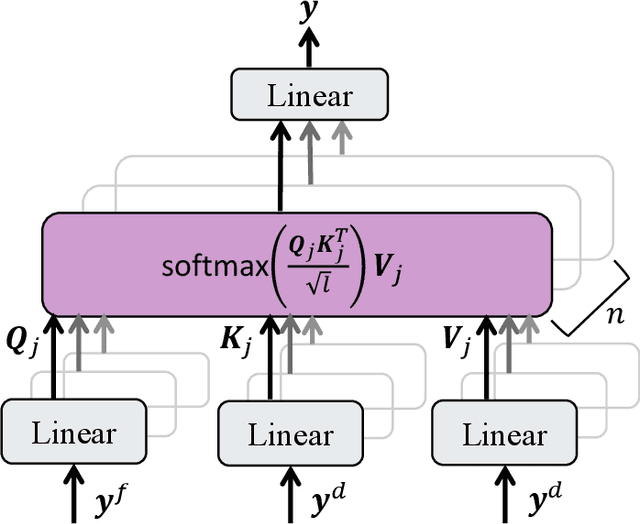

In this paper, we propose a novel multi-task, multi-link relay semantic communications (MTML-RSC) scheme that enables the destination node to simultaneously perform image reconstruction and classification with one transmission from the source node. In the MTML-RSC scheme, the source node broadcasts a signal using semantic communications, and the relay node forwards the signal to the destination. We analyze the coupling relationship between the two tasks and the two links (source-to-relay and source-to-destination) and design a semantic-focused forward method for the relay node, where it selectively forwards only the semantics of the relevant class while ignoring others. At the destination, the node combines signals from both the source node and the relay node to perform classification, and then uses the classification result to assist in decoding the signal from the relay node for image reconstructing. Experimental results demonstrate that the proposed MTML-RSC scheme achieves significant performance gains, e.g., $1.73$ dB improvement in peak-signal-to-noise ratio (PSNR) for image reconstruction and increasing the accuracy from $64.89\%$ to $70.31\%$ for classification.
Mapping the Media Landscape: Predicting Factual Reporting and Political Bias Through Web Interactions
Oct 23, 2024Bias assessment of news sources is paramount for professionals, organizations, and researchers who rely on truthful evidence for information gathering and reporting. While certain bias indicators are discernible from content analysis, descriptors like political bias and fake news pose greater challenges. In this paper, we propose an extension to a recently presented news media reliability estimation method that focuses on modeling outlets and their longitudinal web interactions. Concretely, we assess the classification performance of four reinforcement learning strategies on a large news media hyperlink graph. Our experiments, targeting two challenging bias descriptors, factual reporting and political bias, showed a significant performance improvement at the source media level. Additionally, we validate our methods on the CLEF 2023 CheckThat! Lab challenge, outperforming the reported results in both, F1-score and the official MAE metric. Furthermore, we contribute by releasing the largest annotated dataset of news source media, categorized with factual reporting and political bias labels. Our findings suggest that profiling news media sources based on their hyperlink interactions over time is feasible, offering a bird's-eye view of evolving media landscapes.
Generalization in birdsong classification: impact of transfer learning methods and dataset characteristics
Sep 21, 2024
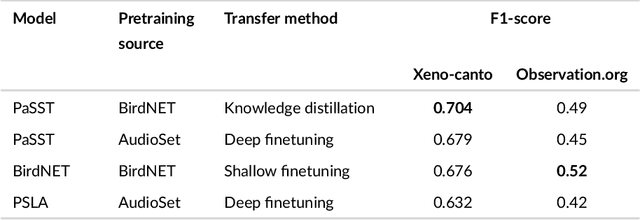


Animal sounds can be recognised automatically by machine learning, and this has an important role to play in biodiversity monitoring. Yet despite increasingly impressive capabilities, bioacoustic species classifiers still exhibit imbalanced performance across species and habitats, especially in complex soundscapes. In this study, we explore the effectiveness of transfer learning in large-scale bird sound classification across various conditions, including single- and multi-label scenarios, and across different model architectures such as CNNs and Transformers. Our experiments demonstrate that both fine-tuning and knowledge distillation yield strong performance, with cross-distillation proving particularly effective in improving in-domain performance on Xeno-canto data. However, when generalizing to soundscapes, shallow fine-tuning exhibits superior performance compared to knowledge distillation, highlighting its robustness and constrained nature. Our study further investigates how to use multi-species labels, in cases where these are present but incomplete. We advocate for more comprehensive labeling practices within the animal sound community, including annotating background species and providing temporal details, to enhance the training of robust bird sound classifiers. These findings provide insights into the optimal reuse of pretrained models for advancing automatic bioacoustic recognition.
Domain-Invariant Representation Learning of Bird Sounds
Sep 16, 2024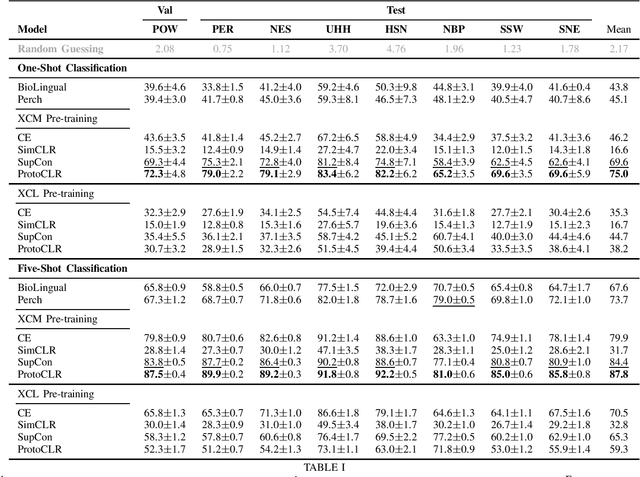
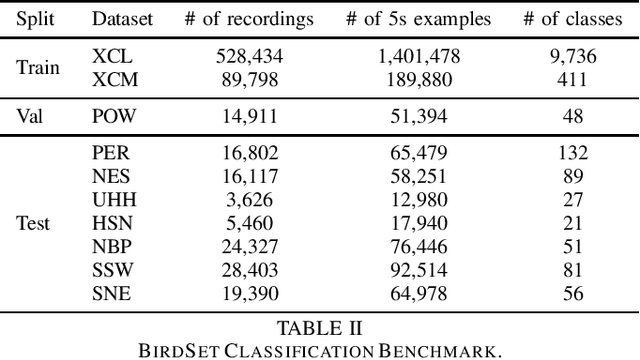
Passive acoustic monitoring (PAM) is crucial for bioacoustic research, enabling non-invasive species tracking and biodiversity monitoring. Citizen science platforms like Xeno-Canto provide large annotated datasets from focal recordings, where the target species is intentionally recorded. However, PAM requires monitoring in passive soundscapes, creating a domain shift between focal and passive recordings, which challenges deep learning models trained on focal recordings. To address this, we leverage supervised contrastive learning to improve domain generalization in bird sound classification, enforcing domain invariance across same-class examples from different domains. We also propose ProtoCLR (Prototypical Contrastive Learning of Representations), which reduces the computational complexity of the SupCon loss by comparing examples to class prototypes instead of pairwise comparisons. Additionally, we present a new few-shot classification benchmark based on BirdSet, a large-scale bird sound dataset, and demonstrate the effectiveness of our approach in achieving strong transfer performance.
Help Me Identify: Is an LLM+VQA System All We Need to Identify Visual Concepts?
Oct 17, 2024



An ability to learn about new objects from a small amount of visual data and produce convincing linguistic justification about the presence/absence of certain concepts (that collectively compose the object) in novel scenarios is an important characteristic of human cognition. This is possible due to abstraction of attributes/properties that an object is composed of e.g. an object `bird' can be identified by the presence of a beak, feathers, legs, wings, etc. Inspired by this aspect of human reasoning, in this work, we present a zero-shot framework for fine-grained visual concept learning by leveraging large language model and Visual Question Answering (VQA) system. Specifically, we prompt GPT-3 to obtain a rich linguistic description of visual objects in the dataset. We convert the obtained concept descriptions into a set of binary questions. We pose these questions along with the query image to a VQA system and aggregate the answers to determine the presence or absence of an object in the test images. Our experiments demonstrate comparable performance with existing zero-shot visual classification methods and few-shot concept learning approaches, without substantial computational overhead, yet being fully explainable from the reasoning perspective.
Seam Carving as Feature Pooling in CNN
Sep 10, 2024This work investigates the potential of seam carving as a feature pooling technique within Convolutional Neural Networks (CNNs) for image classification tasks. We propose replacing the traditional max pooling layer with a seam carving operation. Our experiments on the Caltech-UCSD Birds 200-2011 dataset demonstrate that the seam carving-based CNN achieves better performance compared to the model utilizing max pooling, based on metrics such as accuracy, precision, recall, and F1-score. We further analyze the behavior of both approaches through feature map visualizations, suggesting that seam carving might preserve more structural information during the pooling process. Additionally, we discuss the limitations of our approach and propose potential future directions for research.
HEAD: A Bandwidth-Efficient Cooperative Perception Approach for Heterogeneous Connected and Autonomous Vehicles
Aug 27, 2024In cooperative perception studies, there is often a trade-off between communication bandwidth and perception performance. While current feature fusion solutions are known for their excellent object detection performance, transmitting the entire sets of intermediate feature maps requires substantial bandwidth. Furthermore, these fusion approaches are typically limited to vehicles that use identical detection models. Our goal is to develop a solution that supports cooperative perception across vehicles equipped with different modalities of sensors. This method aims to deliver improved perception performance compared to late fusion techniques, while achieving precision similar to the state-of-art intermediate fusion, but requires an order of magnitude less bandwidth. We propose HEAD, a method that fuses features from the classification and regression heads in 3D object detection networks. Our method is compatible with heterogeneous detection networks such as LiDAR PointPillars, SECOND, VoxelNet, and camera Bird's-eye View (BEV) Encoder. Given the naturally smaller feature size in the detection heads, we design a self-attention mechanism to fuse the classification head and a complementary feature fusion layer to fuse the regression head. Our experiments, comprehensively evaluated on the V2V4Real and OPV2V datasets, demonstrate that HEAD is a fusion method that effectively balances communication bandwidth and perception performance.
 Add to Chrome
Add to Chrome Add to Firefox
Add to Firefox Add to Edge
Add to Edge